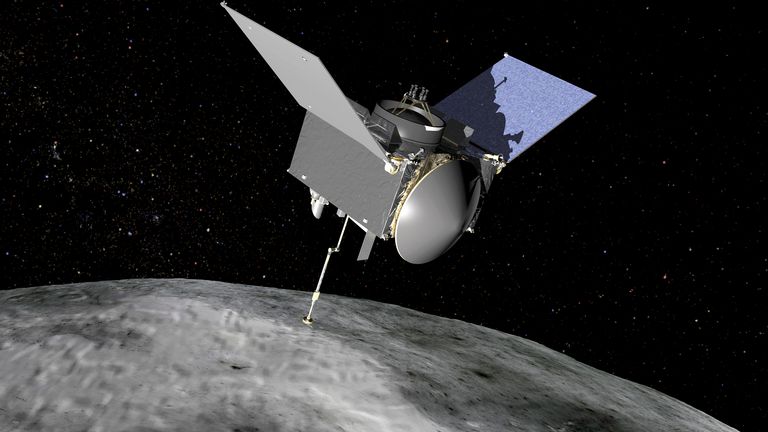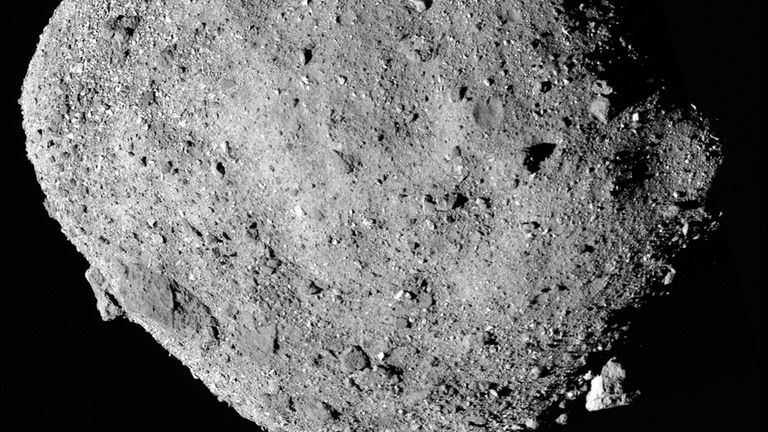A NASA capsule carrying the largest sample ever collected from an asteroid has returned to Earth.
The capsule, which landed in the Utah desert, contained around 250g of rocks and dust collected from asteroid Bennu as part of NASA’s Osiris-Rex mission.
Experts say the carbon-rich, near-Earth asteroid serves as a time capsule from the earliest history of the solar system.
Read more: NASA probe returns with rock samples – watch and follow live
It is anticipated the sample will provide important clues that could help us to understand the origin of organics and water that may have led to life on Earth.
Because the sample has been collected directly from the asteroid, there will be almost zero contamination.
It glowed red hot as it hit the upper atmosphere and plunged towards the Earth, with temperatures inside expected to peak at 2,800C.
Parachutes then deployed near the very end of its descent to safely bring the sample to the ground in the Utah desert.
It is the US space agency’s first mission to collect a sample from an asteroid and the first by any agency since 2020.
A quarter of the sample will be given to a group of more than 200 people, from 38 globally distributed institutions, including a team of scientists from the University of Manchester and the Natural History Museum.
Asteroid Bennu is a 4.5-billion-year-old remnant of the early solar system and is classified as a “near-Earth object” because it passes relatively close to our planet every six years, though the odds of an impact are considered remote.
In 2021, scientists with the Osiris-Rex team said the asteroid could possibly drift into Earth’s orbit and hit the planet by September 2182, though there was a one in 2,700 (0.037%) chance that could happen.
Read more:
Closest-ever photo of massive asteroid Bennu
NASA taking ‘concrete action’ to explore UFOs
Study ‘crucial for understanding formation of planets like Earth’
Ashley King, UKRI future leaders fellow, Natural History Museum, said: “Osiris-Rex spent over two years studying asteroid Bennu, finding evidence for organics and minerals chemically altered by water.
“These are crucial ingredients for understanding the formation of planets like Earth, so we’re delighted to be among the first researchers to study samples returned from Bennu.
“We think the Bennu samples might be similar in composition to the recent Winchcombe meteorite fall, but largely uncontaminated by the terrestrial environment and even more pristine.”
Dr Sarah Crowther, research fellow in the Department of Earth and Environmental Sciences at the University of Manchester, said: “It is a real honour to be selected to be part of the Osiris-Rex sample analysis team, working with some of the best scientists around the world.
“We’re excited to receive samples in the coming weeks and months, and to begin analysing them and see what secrets asteroid Bennu holds.
“A lot of our research focuses on meteorites and we can learn a lot about the history of the solar system from them.
“Meteorites get hot coming through Earth’s atmosphere and can sit on Earth for many years before they are found, so the local environment and weather can alter or even erase important information about their composition and history.
“Sample return missions like Osiris-Rex are vitally important because the returned samples are pristine, we know exactly which asteroid they come from and can be certain that they are never exposed to the atmosphere so that important information is retained.”


